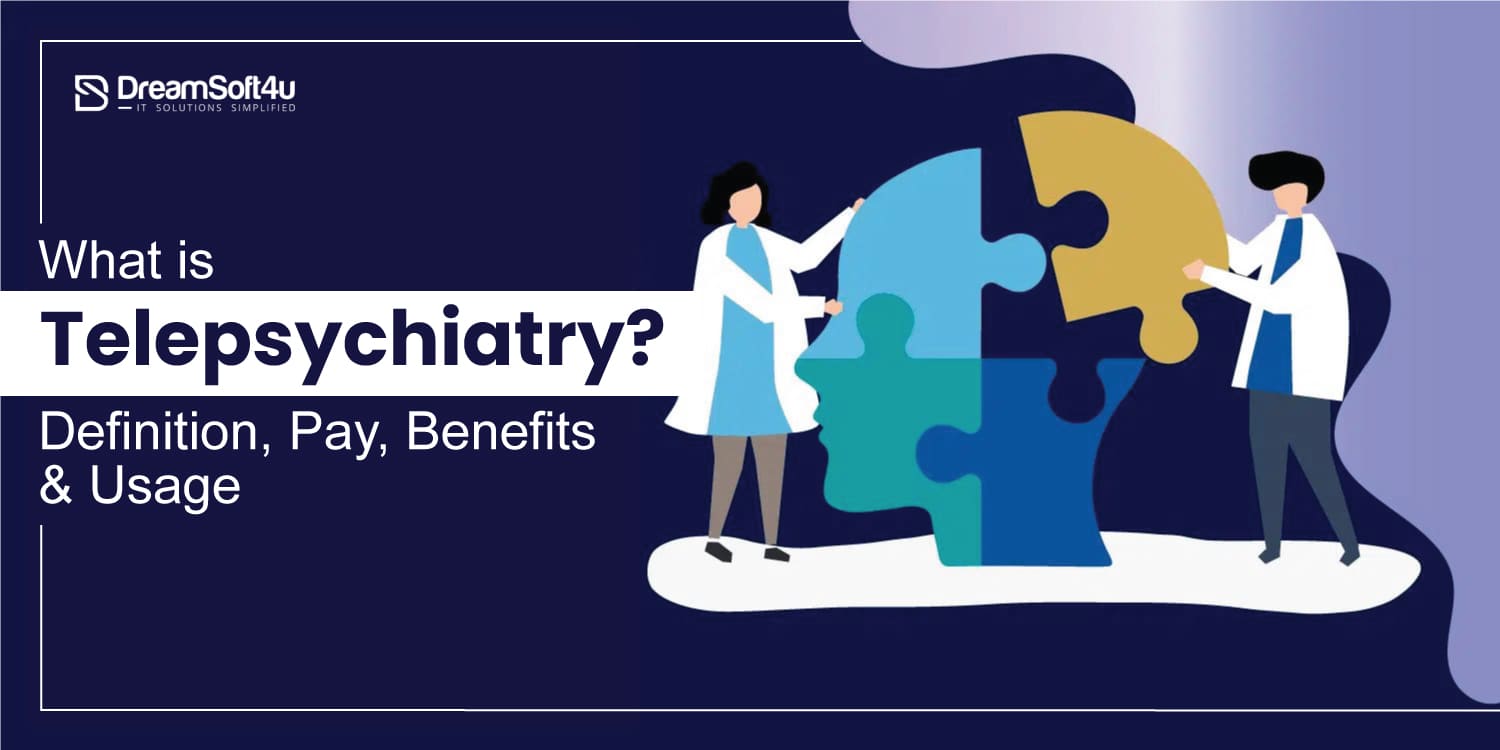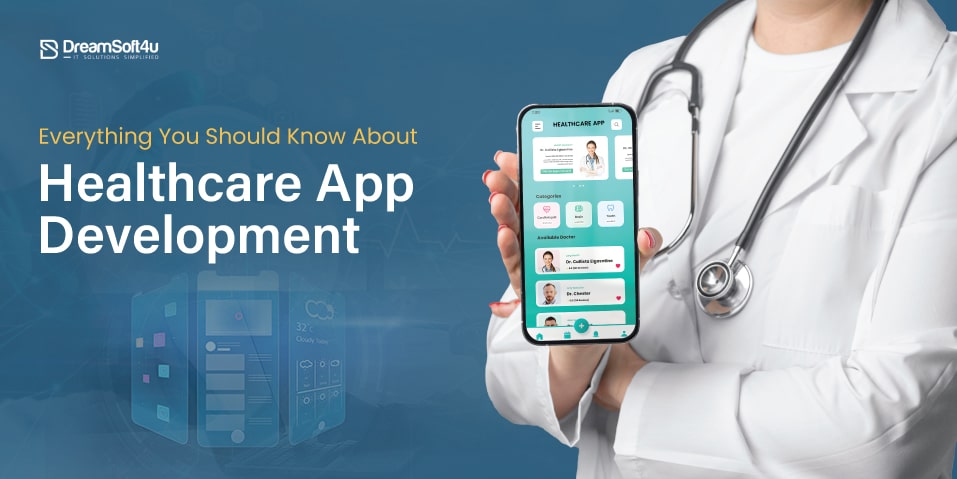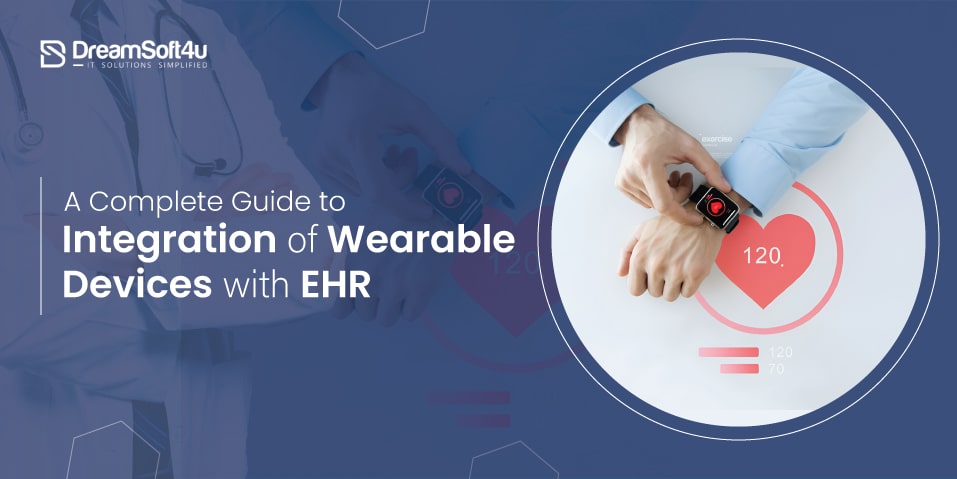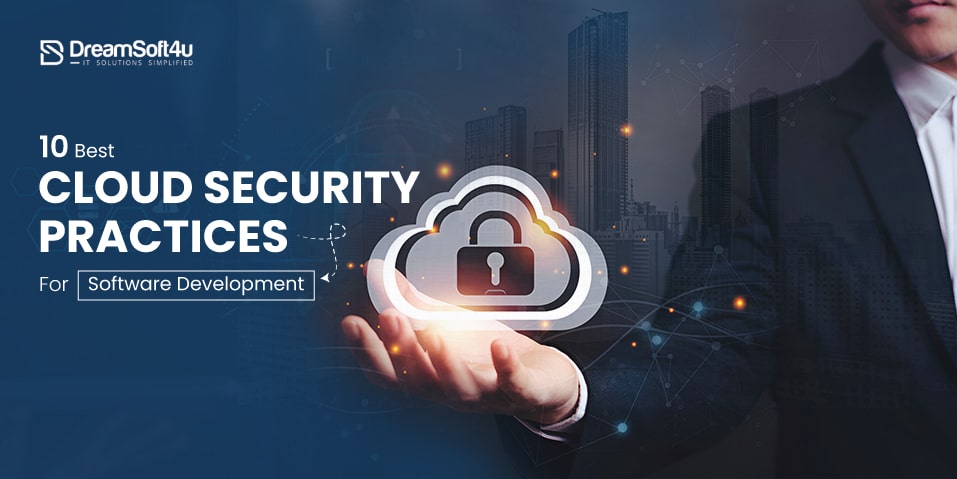Telepsychiatry is a sort of telemedicine in psychiatry and mental health. This term generally describes the delivery of psychiatric assessment and care through telecommunications technology, such as video conferencing.
This practice, known as Telepsychiatry, can include direct one-to-one interaction between a patient and psychiatrist. It also has psychiatrists supporting primary healthcare providers with mental healthcare consultation and specialization. Mental health care can be delivered in live, interactive communication. It can also involve recording medical information (images, videos, etc.) and sending this to a distant site for later review.
Telepsychiatry — is one of the most promising techniques to provide more patient-centred, effective & affordable interventions for people who need psychiatric care.
Telepsychiatry is where your mental and behavioural health care is delivered using telecommunications technology, usually video conferencing. Occasionally this term is applied to all mental and behavioural care
Table of Contents
ToggleWhy is mental health important?
After reading about mental health and its issues, you need to understand why a person needs to handle mental well-being. Mental health is important because it is a vital part of your life and affects your thoughts, behaviours, and emotions. Being safe emotionally can encourage efficiency and effectiveness in work, school, or caregiving activities. It plays a significant part in the health of your relationships and helps you adapt and cope with changes in your life. That’s why many people are taking the help of psychiatrists and American telepsychiatrists.
While in the past, mental health-related specialities have been little affected by advancing technology, telemedicine is poised to have a significant impact on the delivery of behavioural health services because it offers significant benefits to patients, increases the availability of providers to underserved
Barriers to Mental Health Services
The U.S. Center for Disease Control and Prevention reports that of the adults in the country, at least 1 out of 4 have a mental health condition and that almost half of all adults are likely to experience one at some point.
Many people experience these conditions and seek ways to circumvent the inherent challenges. One of the major barriers is cost, but that can be overcome with insurance subsidies. Low visibility near doctors can also be an issue, but you can find assistance using digital health tools and advocacy groups.
Telepsychiatry can improve access to mental health services
Telepsychiatry is a new and exciting technology that may hold the key to helping those with mental health issues. Evidence shows that it can help those without access to quality care. For example, in a study of 260 participants:
Cost — Telepsychiatry is the future of behavioural health, providing a more affordable platform than traditional in-person treatment. With the reduced costs and no need to worry about transportation or childcare, it’s easier for patients to stay on top of their mental health and achieve their goals.
Video visits must have the same coverage as in-person visits in most states, which means more patient benefits.
Distance — Mental health services often cannot reach their patients in remote areas. Thanks to video, they can now be accessed no matter where they are.
Rural areas are less likely to have adequate access to mental health services when compared to more densely-populated urban areas. Telepsychiatry eliminates the need for travel time and having to look up and prepare for the trip. This allows the patient to seek help right away in a crisis situation.
Remote visits can also be used to support intake into inpatient facilities.
Shame — It cannot be easy to take the first step towards getting help for mental health. Things like a negative stigma and lack of privacy prevent people from getting the necessary care. Telemedicine, however, is confidential and offers more privacy than in-person care. There are specific benefits to using an AI writing assistant, like being more open and honest, as texts can be seen as less personal.
Privacy
When using the internet for any purpose, security & privacy should be of utmost concern. However, telehealth software can effectively address this and protect against loss or misuse of your information without breaching HIPAA regulations. Professionals in the mental health field should not use consumer-grade video chat solutions for downtime chats. They might look like a good option compared to more professional solutions, but they almost always lack encryption and may even sell user data. The best idea is to turn to less risky options and vendors willing to sign a business associate agreement.
The Patient Experience
For the typical patient, using telepsychiatry is related to their experience with face-to-face psychiatry. A primary care provider or local mental health clinic typically refers them.
Once you have verified your patient’s insurance coverage, scheduling a video visit is unnecessary. Some states require providers to establish a face-to-face relationship before administering remote health solutions.
Using telemedicine, doctors can now provide patients with consultations from anywhere in the world. It is easy to use, and the medical flow will be as if in person. The doctor will discuss your case, and you can ask questions to clarify doubts.
Telepsychiatry providers can prescribe medications from a distance. Follow-up appointments or referrals can also be done the same way.
Telehealth will play a critical role in the future of American health care, particularly when it comes to mental health. The benefits for patients and the system are substantial and will grow with the increasing use of video calls.
What does telepsychiatry pay?
How much does Telepsychiatry make? As of Apr 30, 2023, the average annual pay for a Telepsychiatry in the United States is $213,186 annually. Just in case you need a simple salary calculator, that works out to be approximately $102.49 an hour.
Telepsychiatry for mental health
Telepsychiatry for mental health has brought mental health care to rural areas and underserved communities where trained professionals are scarce.
Research indicates that telemedicine is an effective and cost-efficient option that increases client access to providers.
They also state that telepsychiatry is equivalent to in-person care in terms of the following:
- The Accuracy of Diagnosis
- The Effectiveness of Treatment
- The Quality of Care
- Client Privacy and Confidentiality
Research supports the use of telepsychiatry in the treatment of post-traumatic stress disorder. Studies also indicate that it is effective and acceptable in treating depression.
Telepsychiatry is also an effective method in the treatment of:
- Anxiety
- Eating Disorders
- Substance Abuse
- Schizophrenia
How does it work, and where can a person use it?
Telepsychiatry works similarly to traditional in-person appointments.
A person will need to contact a local health clinic or a doctor. They will then receive a referral to a psychiatrist.
The clinic, doctor, or client may set up the initial telepsychiatry appointment by contacting the psychiatrist who provides the service.
Once they have an appointment time, the client can log in to the appropriate video conferencing platform and wait for the psychiatrist to come online. Alternatively, they may await a telephone call.
Clients should ensure that they have all relevant records and information, including details of prescriptions, to hand. They should also make a list of questions or concerns to address.
In-person and telepsychiatry appointments adhere to the same guidelines and typically follow the same format. The psychiatrist and the client will discuss the relevant issues and goals.
The psychiatrist can:
- Create and implement treatment plans
- Prescribe medication
- Schedule follow-up appointments
- Refer the client to other services
Telepsychiatric services are available in many:
- Mental Health Centers
- Nursing Homes
- Primary Care Centers
- Prisons
- Residential Treatment Facilities
- Schools
Telepsychiatry Benefits:
Virtual doctor visits in telemedicine psychiatry assist patients’ requirements for suitable, affordable & simply- approachable mental healthcare services. There are several benefits of telepsychiatry. We may see in such a manner-
- Telepsychiatry made it easy to access healthcare in rural areas.
- Made possible to bring care to the location of the patient.
- Help integrate behavioural health care and primary care, leading to better outcomes.
- Now there are no more visits to the emergency room.
- It has reduced delays in patients’ care.
- Reduce the barrier of stigma.
- Improve regular care and follow-up without a single visit to the patient’s location.
- Reduce the requirement for time off work, childcare, etc., to access appointments far away.
- Decreased transportation barriers, such as lack of transportation (Especially in Rural Areas) or long drives.
Benefits of Telepsychiatry for Patients
Telepsychiatry provides both patients and healthcare providers with an attractive mix of benefits. Telemedicine continues to grow as the healthcare community experiences its many advantages, from unparalleled convenience to superb cost savings.
Some other benefits of Telepsychiatry include:
- Lower costs: Some research shows that people who use telemedicine spend less time in the hospital, thus saving on costs. Less commuting time can also result in fewer secondary expenses, such as childcare and gas.
- No transportation time or costs: You can save money on gas, parking, and public transportation by seeing your doctor on your mobile device or computer. Much better, you don’t waste time driving or run the risk of running into a traffic jam that makes you late for your meeting, or worse, late to return to work.
- In particular, in rural areas, patients enjoy better healthcare outcomes. Academic medical centres have described telepsychiatry as an innovative way to enhance care for rural communities. Additionally, telemedicine has produced significant results among the following underserved populations:
- Populations associated with increased infant mortality
- Individuals with limited mobility
- Older adults
- People living in areas with high rates of poverty
- Telemedicine improves the quality of care delivery: Telemedicine may increase the standard of treatment for both medically and mentally ill patients. One recent research found that patients with telemedicine had:
- 38% fewer hospital admissions
- 31% fewer hospital re-admissions
- 63% more likely to spend less time in hospital
- We’re more engaged in their healthcare
Different Sub-Specialties of Telepsychiatry
Telepsychiatry includes a variety of sub-specialities based on different contexts of service delivery.
Home-based Telepsychiatry
In telepsychiatry from home, the psychiatrist meets the patient through video conferencing. To make that possible, you just need to webcam and high-speed internet. One important thing that needs to know is that home-based telepsychiatry serves the services under the HIPAA-compliant online platform to provide safe and secure care and to avoid the risk of violating the patient-provider relationship, issues of security and possible HIPAA violations.
Forensic Telepsychiatry
In Forensic Telepsychiatry, a Virtual psychiatrist provides care to a patient in a prison or correctional facility, including medication consultation, psychiatric assessment, pre-parole evaluations, suicide watch, and more.
Telepsychiatry can save correctional facilities significantly by eliminating prisoners needing to be escorted to off-site appointments and psychiatric interventions.
On-Demand Telepsychiatry (Emergency Telepsychiatry)
On-Demand Telepsychiatry was developed as of 2008 guidelines for emergency psychiatric patients, such as evaluating homicidal, suicidal, psychotic, violent, manic, depressed, and acutely anxious patients.
Emergency Telepsychiatry services are already being offered to the emergency departments of hospitals, community mental healthcare centres, prisons, and schools. Emergency telepsychiatry can reduce various conditions, such as easing staff shortages in overworked hospital emergency departments and increasing patient throughput and ED disposition.
Scheduled Telepsychiatry
In Scheduled Telepsychiatry, consistent mental healthcare providers serve a regular caseload of consumers at previously scheduled times.
Remote mental care providers can consult on medication management, team meetings, and supervision or provide traditional psychiatric assessments and consultations.
Apart from that, Having access to remote providers allows facilities, especially in rural areas struggling to recruit and manage providers, access to a greater variety of speciality care to offer their consumers.
Facilities That Use Routine Telepsychiatry Include:
Community Mental Health Centers (CMHCs), Outpatient clinics, Federally Qualified Health Centers (FQHCs), Universities and Schools, Residential Programs, Nursing Homes, Accountable Care Organizations (ACOs), Substance Use Treatment Centers, Military Bases
Build Your Custom Telepsychiatry App Today
We can assist you! Click here to get the Best Telepsychiatry App Development Services !
Request A QuoteHIPAA Compliance in the United States
Health Insurance Portability and Accountability Act (HIPAA) is a US federal law that watches the security & privacy standards for telemedicine and electronic medical information exchange such as elemental healthcare services.
To execute HIPAA guidelines, many healthcare providers build their own specialized videoconferencing services since common third-party consumer solutions do not include sufficient security and privacy safeguards. There are also a growing number of advanced HIPAA-compliant technologies available for telepsychiatry.
Conclusion
Telemedicine app development has begun to change the healthcare industry landscape, showing that our healthcare system needs innovative solutions.
The COVID-19 pandemic has turned the landscape of the healthcare industry upside down. Telemedicine software development is now the primary goal of healthcare companies wishing to provide healthcare services to patients from a distance.










